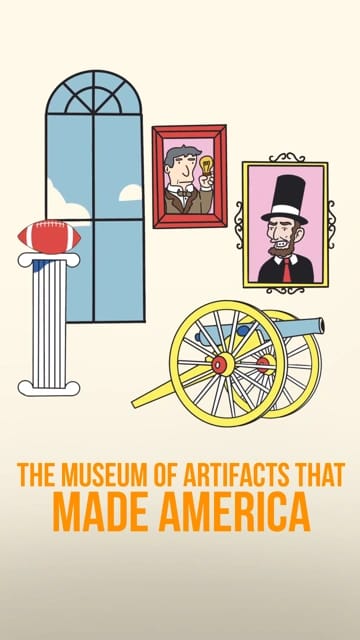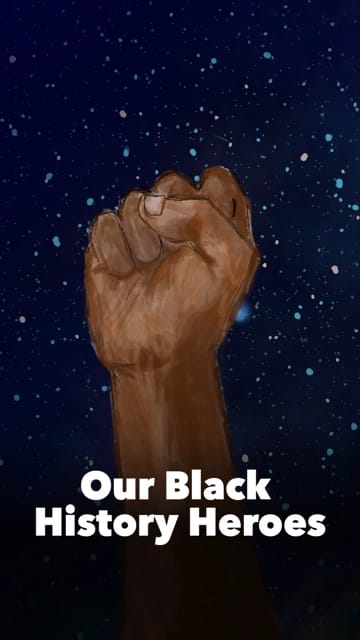20 Formative assessment examples for primary school students
In this guide
Educators are often familiar with the most common types of formative assessments (exit tickets, self-assessments, and quizzes), which help inform their instruction and provide key information about what students know and can do. This article pushes beyond these common assessments, providing innovative and engaging ways to assess primary school students in Maths, Science, EAL, Humanities, and Art from Reception – Year 6. These assessments are grounded in a personalised learning framework that supports diverse opportunities for demonstration of mastery.
Introduction
Formative assessments benefit students by helping them address their weaknesses and celebrate their strengths. They also inform instruction so educators can better see learning gaps, misconceptions, and students’ comprehension levels early on and provide additional learning support to those students who need it. When formative assessments are personalised to meet the specific needs of individual students, this progress monitor tool transforms into a strategy for student agency.
Understanding the purpose of formative assessment
Why is choosing the right formative assessment essential?
A formative assessment provides real-time information about what a student knows and can do. According to William (2011), “Formative assessment is central to effective instruction, as it helps the teacher identify the next steps in instruction based on students’ current understanding” (p. 24). It provides immediate feedback that educators can use to inform and change their instruction to best meet the needs of all of their students. The best formative assessment improves learning and teaching simultaneously. However, choosing the right formative assessment is important. Teachers should use a variety of formative assessments that meet the unique and varied abilities, backgrounds, and learning styles of their diverse classrooms.
Innovative formative assessments to support varied assessment use in the classroom

Maths
KS1
1) Maths journals: A maths journal is a great way for students to demonstrate their understanding of maths concepts and strengthen their writing abilities. Make learning relevant to students’ lives by giving them problems that relate to real life. Students not only answer the maths questions but have an opportunity to explain the thinking behind their answers. This can reveal misconceptions and facilitate targeted teacher feedback that addresses the specific area of concern. According to Brookhart (2010), “Journals can serve as a window into students’ thought processes” (p. 57).
2) Interactive number lines: This formative assessment supports kinesthetic learners by allowing students to move about and physically engage with the number line as they learn key concepts such as subtraction, addition, and number sequence. Burns and Silbey (2000) highlight that such interaction can support retention, stating, “interactive number lines help young learners visualise and internalise mathematical concepts” (p. 44)
Low KS2
3) Maths mystery stories: Students step into the role of mystery writers while demonstrating their understanding of maths concepts. Using maths problems to provide clues to the reader to uncover the final mystery, this assessment is an innovative way for teachers to monitor both student’s understanding of maths skills and their creative thinking skills. According to Ginsburg (2009), “Integrating narrative and mathematics can enhance students’ engagement and understanding” (p. 102).
4) Digital escape rooms: Another formative assessment designed to get students up and moving involves solving maths problems in an interactive digital escape room. Zadina (2014), supports that such activities can facilitate critical thinking, stating, “Digital escape rooms can make learning interactive and fun, motivating students to apply their mathematical knowledge creatively” (p. 88).
ELA
KS1
5) Story retelling: According to Fisher and Frey (2014), “Story retelling is a powerful way to gauge comprehension and narrative ills” (p. 63). Allowing students to retell a story they have just read through role-playing, puppetry, or with props is a fun way to assess student comprehension and narrative ability while giving students the agency to express themselves in their own words.
6) Visual word hunt: Aimed at vocab acquisition, this visual matching activity will surely be a winner. Students match vocabulary words to images found in magazines or books. “Word hunts encourage students to engage with language actively, reinforcing their understanding of new vocabulary” (Stahl & Nagy, 2006, p. 134).
KS2
7) Book trailers: Taking a seat in the director’s chair, students create video trailers for a book they have read. To assess comprehension and support creativity, ask students to summarise the plot visually. “Multimodal projects like book trailers can enhance students’ understanding and retention of literary elements” (Jenkins, 2006, p. 45).
8) Character diaries: “Character diaries encourage deep engagement with text and critical thinking about character motivations and actions” (Harvey & Goudvis, 2007, p. 76). When students take on the role of a book character and write diary entries from that perspective, it helps them deepen their understanding of what motivates the book character and how he or she develops throughout the story.

Humanities
KS1
9) Classroom museum: A hands-on project that introduces students to the concepts of a museum exhibit. Students explore creating a living wax museum and drawing exhibition with written artist’s statements describing their choices. This assessment supports creativity, student choice, and voice and makes the connection to history more personal and relevant. Levstik and Barton (2011) support this notion, stating, “Creating exhibits helps young students connect with history in a tangible and meaningful way” (p. 54).
If students are stuck for ideas, you can introduce them to the concept of museum artefacts with the video series, The Museum of Artifacts that Made America.
10) Community maps: The National Research Council (2006) states, “Map-making activities foster spatial thinking and a deeper understanding of community structures” (p. 92). This assessment allows students to connect personally to the activity while teaching them about geography, cartography, and one’s own community. Students can choose their favourite location within their community, label the map locations, and explain why they chose them. Additional map skills activities can be found here.
KS2
11) Historical interviews: Students turn back the hands of time. Working in pairs, students choose a historical figure and role-play an interview with the chosen historical person. “Role-playing interviews can bring history to life, allowing students to explore different perspectives” (Seixas & Morton, 2013, p. 113). If you’re looking for less known historical figures, ask students to choose a historical figure from the series Hidden Figures or Our Black History Heroes.
12) Debate clubs: Debating historical issues helps students develop critical thinking and public speaking skills” (VanSledright, 2002, p. 77). Students can choose a historical event and research, talk about it, and reflect on differing perspectives.

Science
KS1
13) Nature journals: Journaling on a nature walk is a way for students to hone in on their observation skills and gain a deeper understanding of what they see around them. Louv (2008) agrees, stating “Nature journals can deepen students’ connection to the environment and enhance their observational skills” (p. 148).
14) Science experiment videos: Allowing students to demonstrate mastery in various ways fosters agency in students and allows them to choose ways of showing understanding that play to their strengths. Video is a great format for students to use to showcase what they know and can do. Students can document their understanding of the scientific method by videoing this process as they do science experiments. “Creating videos for experiments allows students to demonstrate their understanding in a dynamic way” (Bransford, Brown, & Cocking, 2000, p. 66). The Experimentary and Experimentary Science @ Home series are great examples of science experiment videos that may give your students inspiration about how to demonstrate their understanding.
KS2
15) Science fair projects: Science fairs allow students to demonstrate their process of scientific inquiry in a variety of formats, including PowerPoint presentations, role-playing, video documentation, demonstrations, poster presentations, and so much more. It is a comprehensive project that lends itself to flexible pacing. According to Schwartz, Sadler, and Crawford (2004), “Science fairs encourage in-depth investigation and critical thinking” (p. 22).
16) Interactive science notebooks: “Interactive notebooks are effective tools for formative assessment and promoting scientific literacy” (Marcarelli, 2010, p. 89).
Art
KS1
17) Art portfolios: Portfolios are a great way to monitor progress and assess student understanding and growth over time. “Art portfolios provide a longitudinal view of students’ artistic development” (Dorn, Madeja, & Sabol, 2004, p. 61).
18) Music journals: Connecting to social-emotional learning, music journals allow students to document the emotional connection they feel when they listen to music. Students can talk about tone, tempo, mood, and rhythm and how these elements work together to elicit a certain feeling. “Music journals can help students articulate their emotional responses to music and understand its impact” (Campbell, 2008, p. 73).
KS2
19) Collaborative murals: Collaboration is an important skill for students to develop. According to Cohen (1994) Collaborative art projects can enhance students’ teamwork skills and creative expression” (p. 28).
20) Drama performances: Allow students “choice and voice” (Fulton County Schools, n.d.) to choose a historical event, figure, or story to perform as a role-play, skit, or short play. Students can work in teams or individually. “Drama activities can engage students in a multisensory learning experience, deepening their understanding of content” (Wagner, 1998, p. 91).

A personalised learning framework as a foundation for formative assessment is an assessment that is designed to be responsive to the individual learning needs of the learner. The learner’s unique needs include consideration for multiple aspects of learning, such as learning pace, prior knowledge engagement, metacognition triggering, and also demonstration of mastery. Allowing students to demonstrate mastery in varied and multiple ways tailors education to meet the unique needs of each and every student.
Learners learn best when the learning makes sense to them. Personalised learning flips traditional learning by reshaping the learning content to fit the student rather than expecting the learner to conform to content pacing, delivery method, and assessment mode.
The assessments shared here align with a personalised framework:
- Student-Centred Learning: Maths Mystery stories, Historical Interviews, and Classroom Museums all support student choices that reflect individual interests and strengths.
- Competency-Based Progression: Music and Nature Journals, Interactive Science Notebooks, and Science Fair Projects allow flexible pacing and choice for demonstrating learning.
- Choice and Voice: Art Portfolios, Drama Performances and Debate Clubs all support students demonstrating mastery in the learning style that best reflects their strengths.
Personalised learning aims to customise learning experiences to address the distinct learning needs, interests, aspirations, or cultural backgrounds of individual students.
Fulton County Schools, n.d.
As a tenured educator, I embraced personalised learning and utilised formative assessments as not only a check for understanding but also a springboard for fostering critical thinking and creativity among my students. For example, one art project challenged students to create artworks that utilised materials uniquely to express complex emotions, like fear or love, in a non-verbal and non-traditional way. The project not only facilitated students developing their artistic skills, but it also encouraged them to reflect deeply on their artistic process. The formative assessment was then designed to capture not only a growth in skillsets but also a growth in the students’ thinking processes for developing habits of mind for qualities that are more complex to assess, for instance, persistence and reflective thinking. I observed, “The most profound learning occurred when students were given the freedom to experiment and make mistakes, which ultimately led to more meaningful and authentic artistic expressions” (Lee, 2024, 91). By personalising learning in this way and tailoring the formative assessments to each student’s specific needs, I could capture and more accurately measure their ineffable growth of habits of mind.
Conclusion
Formative assessments are critical for teachers to monitor student progress immediately. They allow teachers to get a snapshot of what their students know and can do while they are learning, allowing the teacher to pivot for remediation quickly or to correct a misunderstanding or misconception in real-time proactively. The flexibility of formative assessments makes them well-suited to supporting personalised learning. This allows assessments to meet students’ individual needs rather than expecting students to conform to a particular evaluation method. Not only should instruction be designed to be inclusive and equitable, but formative assessment should also be designed to ensure all students have an opportunity to succeed.
References
- Brookhart, S. M. (2010). How to Assess Higher-Order Thinking Skills in Your Classroom. ASCD.
- Burns, M. S., & Silbey, R. (2000). Interactive Number Lines for Young Learners. Early Childhood Mathematics.
- Campbell, P. S. (2008). Music, Education, and Diversity: Bridging Cultures and Communities. Teachers College Press.
- Cohen, E. G. (1994). Designing Groupwork: Strategies for the Heterogeneous Classroom. Teachers College Press.
- Dorn, C. M., Madeja, S. S., & Sabol, F. R. (2004). Assessing Expressive Learning: A Practical Guide for Teacher-Directed Authentic Assessment in K-12 Visual Arts Education. Routledge.
- Fisher, D., & Frey, N. (2014). Checking for Understanding: Formative Assessment Techniques for Your Classroom. ASCD.
- Fulton County Schools. (n.d.). Personalized Learning Roadmap. Retrieved from Fulton County Schools.
- Ginsburg, H. P. (2009). Mathematical Thinking and Learning. Routledge.
- Harvey, S., & Goudvis, A. (2007). Strategies That Work: Teaching Comprehension for Understanding and Engagement. Stenhouse Publishers.
- Jenkins, H. (2006). Convergence Culture: Where Old and New Media Collide. NYU Press.
- Lee, NaJuana P. “Beyond the Color Wheel: Assessing for Habits of Mind in the Art Classroom.” In Authentic Secondary Arts Assessment: Snapshots from Art Teacher Practice, edited by Cathy Smilan and Richard Siegesmund, section 3, chapter 14, 91. New York: Routledge Taylor & Francis Group, 2024.
- Levstik, L. S., & Barton, K. C. (2011). Doing History: Investigating with Children in Elementary and Middle Schools. Routledge.
- Louv, R. (2008). Last Child in the Woods: Saving Our Children from Nature-Deficit Disorder. Algonquin Books.
- Marcarelli, K. (2010). Teaching Science with Interactive Notebooks. Corwin Press.
- National Research Council. (2006). Learning to Think Spatially: GIS as a Support System in the K-12 Curriculum. National Academies Press.
- Schwartz, R. S., Sadler, T. D., & Crawford, B. A. (2004). Developing a Framework for Assessing Scientific Reasoning in Young Children. Science Education.
- Seixas, P., & Morton, T. (2013). The Big Six Historical Thinking Concepts. Nelson Education.
- VanSledright, B. (2002). In Search of America’s Past: Learning to Read History in Elementary School. Teachers College Press.
- Wagner, B. J. (1998). Educational Drama and Language Arts: What Research Shows. Heinemann.
- Wiliam, D. (2011). Embedded Formative Assessment. Solution Tree Press.
- Zadina, J. N. (2014). Multiple Pathways to the Student Brain: Energizing and Enhancing Instruction. Jossey-Bass.

NaJuana Lee
briefcase iconSr Director of Learning and Development | Curriculum Design Expert
Dr. NaJuana P. Lee has a unique blend of expertise combining over 10 years of experience in both secondary and post-secondary education and 15+ years as a curriculum development expert. Her contributions have empowered teachers worldwide with culturally competent, innovative and engaging curriculum and teaching materials designed to facilitate all students succeeding.
Other posts
Want more content like this?
Subscribe for blog updates, monthly video releases, trending topics, and exclusive content delivered straight to your inbox.













